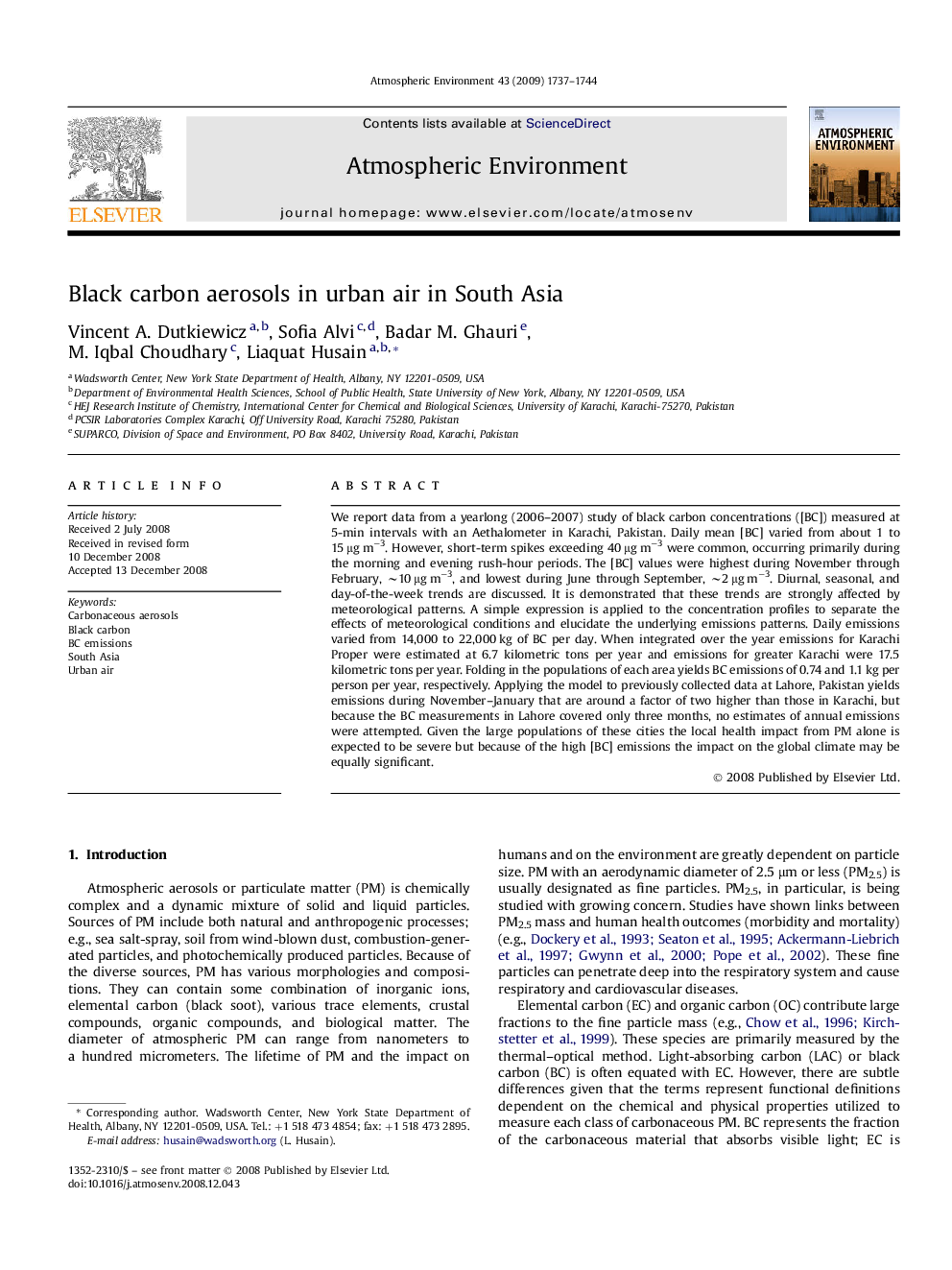| Article ID | Journal | Published Year | Pages | File Type |
|---|---|---|---|---|
| 4441982 | Atmospheric Environment | 2009 | 8 Pages |
We report data from a yearlong (2006–2007) study of black carbon concentrations ([BC]) measured at 5-min intervals with an Aethalometer in Karachi, Pakistan. Daily mean [BC] varied from about 1 to 15 μg m−3. However, short-term spikes exceeding 40 μg m−3 were common, occurring primarily during the morning and evening rush-hour periods. The [BC] values were highest during November through February, ∼10 μg m−3, and lowest during June through September, ∼2 μg m−3. Diurnal, seasonal, and day-of-the-week trends are discussed. It is demonstrated that these trends are strongly affected by meteorological patterns. A simple expression is applied to the concentration profiles to separate the effects of meteorological conditions and elucidate the underlying emissions patterns. Daily emissions varied from 14,000 to 22,000 kg of BC per day. When integrated over the year emissions for Karachi Proper were estimated at 6.7 kilometric tons per year and emissions for greater Karachi were 17.5 kilometric tons per year. Folding in the populations of each area yields BC emissions of 0.74 and 1.1 kg per person per year, respectively. Applying the model to previously collected data at Lahore, Pakistan yields emissions during November–January that are around a factor of two higher than those in Karachi, but because the BC measurements in Lahore covered only three months, no estimates of annual emissions were attempted. Given the large populations of these cities the local health impact from PM alone is expected to be severe but because of the high [BC] emissions the impact on the global climate may be equally significant.
